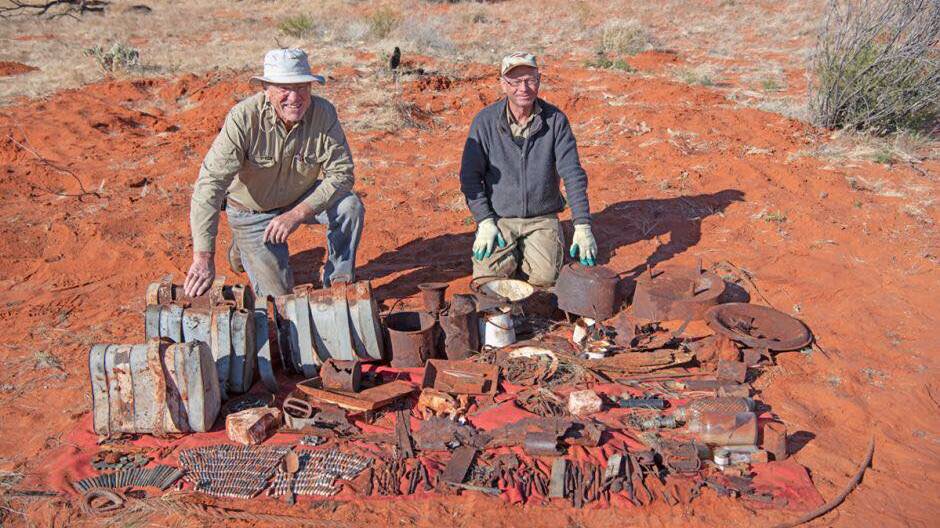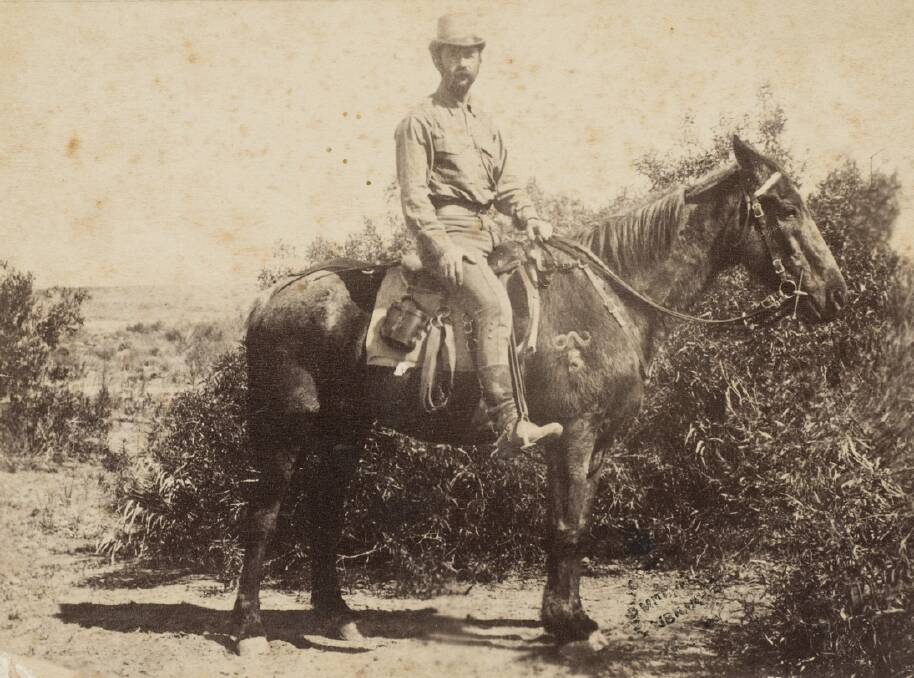
Six-time Bathurst 1000 winner Larry Perkins has made a major archaeological find in central Australia.
Subscribe now for unlimited access.
$0/
(min cost $0)
or signup to continue reading
Mr Perkins and his team have discovered a cache of equipment associated with European explorers Henry Barclay and Ronald MacPherson.
Henry Vere Barclay is a little known explorer of central Australia.
Born in England in 1845, he was deployed to Australia with the Royal Marines in 1863, as a naval surveyor.

From 1904 to 1905 Barclay participated in the Barclay-McPherson expedition to survey the Northern Territory, and in 1911 surveyed prospective routes for railways in Queensland and New South Wales.
It is a cache of equipment abandoned by the explorers which Mr Perkins has now found in the Simpson Desert.
The Department of Tourism and Culture’s Director of Heritage Branch, Michael Wells, said he received a call from Mr Perkins in mid-June advising him of the find.
“Mr Perkins’ incredible discovery gives a unique insight into early European exploration of Australia in the late 19th and early 20th centuries,” Mr Wells said.

“Barclay and MacPherson left Oodnadatta in South Australia in 1904 in an effort to find a viable stock route to Birdsville in Queensland. Records show that on November 20, 1904 the expedition team abandoned all ‘non-essential’ equipment in a remote location south east of Alice Springs.
“Up until now, those items were considered lost forever in the Australia outback.
“Artefacts recovered from the site include several steel water pannikins designed to be carried by camels, cooking equipment, bottles and personal items. Everything recovered will go into the custody of the Museum of Central Australia in Alice Springs.
“This is an extremely exciting find that provides valuable information about the explorers Barclay and MacPherson, and their journey into the Simpson Desert in 1904.
“The equipment used by Barclay and MacPherson in 1904 was similar to that used by more famous early European explorers such as Burke and Wills.
“Two archaeologists from the Heritage Branch met Mr Perkins at the site on June 25 to begin excavation, with the Heritage Branch archaeologists working closely with Mr Perkins and his team.
“A conservation assessment will be carried out as soon as possible in order to determine the long-term conservation requirements of the items.”


